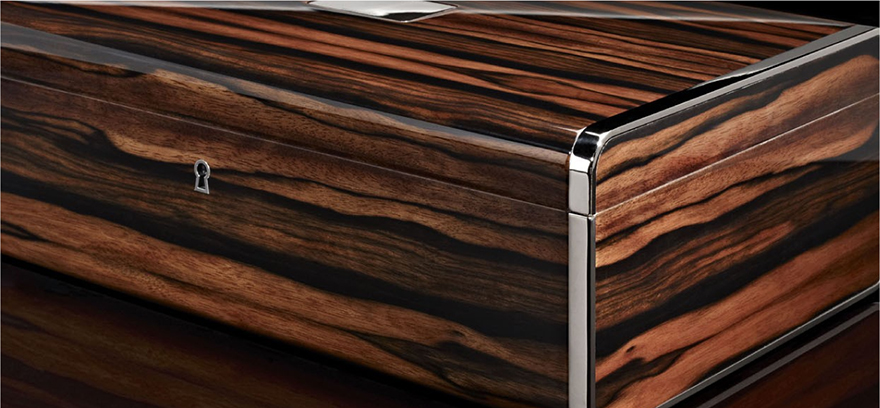An Introduction To Wood Species, Part 9: Ebony

This Wood Species series of entries comes to us from guest writer Rob Wilkey, an Atlanta-based woodworker and industrial designer whose expertise is in small home goods, furniture, and large installations.
Over the next few articles, we'll be analyzing a number of common imported wood species. This week's featured species:

The name "ebony" is given to a number of species in the Diospyros genus that exhibit an extremely high density and distinct black coloration within the wood. The trees in this category, which grow mainly in the tropical regions of West Africa and Southeast Asia, grow very slowly and don't reach a very large size at maturity. These factors, combined with a high global demand for the lumber, have resulted in many species being overharvested. A number of ebonies are under CITES restrictions, and even those that aren't demand a high price.

Ebony is extremely dense and ranges from 2400lbf to 3200lbf on the Janka scale, making it some of the hardest wood in the world. Grain properties vary slightly from species to species, but the wood generally has small, diffuse pores and occasionally interlocked grain. Every species in the ebony family is highly durable and rot resistant, but most suffer from significant shrinkage and seasonal movement. These factors make ebony very difficult to work, and the wood is known to quickly dull tools. Thus, ebony is usually reserved for small and intricate projects such as carvings, musical instruments, and lathe-turned items. A high natural oil content makes the wood difficult to glue, but it responds beautifully to finishes and can be sanded to a very high natural shine.

Although ebony is known for its solid black color, the various species can actually differ greatly in appearance. Gaboon Ebony is a very dark, slightly brownish black and Ceylon Ebony is an even deeper black with occasional dark brown streaks, whereas Mun Ebony and Macassar Ebony are lighter brown with tightly spaced solid black growth rings. Even stranger, the species known as Black & White Ebony is a pale yellow with random, solid black streaks throughout the wood, as seen below on this pair of hand planes crafted by Konrad Sauer.

The extremely high cost of solid ebony lumber has led many sources to produce veneers, usually from Macassar and Mun Ebony. These veneers are still rather expensive, and are commonly used for luxury furniture, paneling, and small projects, such as the Macassar Ebony jewelry box below.

Although ebony can be prohibitively expensive, it can add some incredible and unique aesthetics to a project. It's difficult working properties and rarity put it in a class of exotic lumber that is usually only sought after by master woodworkers, but a careful hand and a bit of patience can turn a block of ebony into a beautiful heirloom.
In next week's article, we'll look at Teak, and learn why it is the perfect all-weather wood species.
Material Matters: Wood
Species:
» An Introduction To Wood Species, Part 1: Properties & Terminology
» An Introduction To Wood Species, Part 2: Pine
» An Introduction To Wood Species, Part 3: Oak
» An Introduction To Wood Species, Part 4: Maple
» An Introduction To Wood Species, Part 5: Walnut
» An Introduction To Wood Species, Part 6: Cherry
» An Introduction To Wood Species, Part 7: Mahogany
» An Introduction To Wood Species, Part 8: Rosewood
» An Introduction To Wood Species, Part 9: Ebony
» An Introduction To Wood Species, Part 10: Teak
How Boards are Made:
» How Logs Are Turned Into Boards, Part 1: Plainsawn
» How Logs Are Turned Into Boards, Part 2: Quartersawn
» How Logs Are Turned Into Boards, Part 3: Riftsawn
Wood Movement:
» Wood Movement: Why Does Wood Move?
» Controlling Wood Movement: The Drying Process
» Dealing with Wood Movement: Design and Understanding
-
oFavorite This
-
QComment
K
{Welcome
Create a Core77 Account
Already have an account? Sign In
By creating a Core77 account you confirm that you accept the Terms of Use
K
Reset Password
Please enter your email and we will send an email to reset your password.

